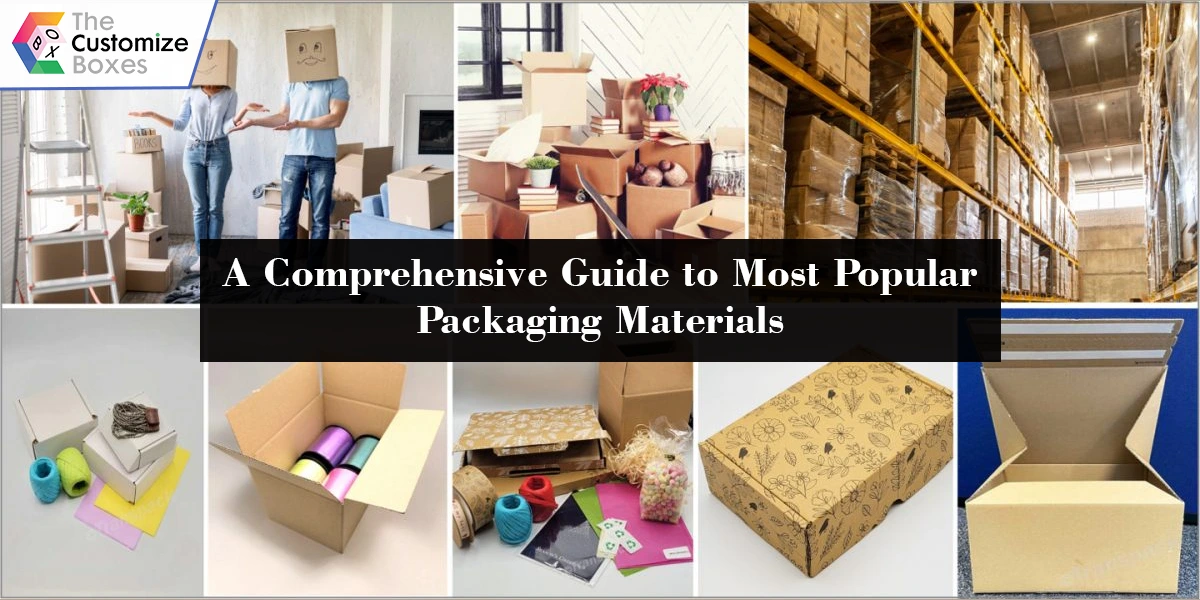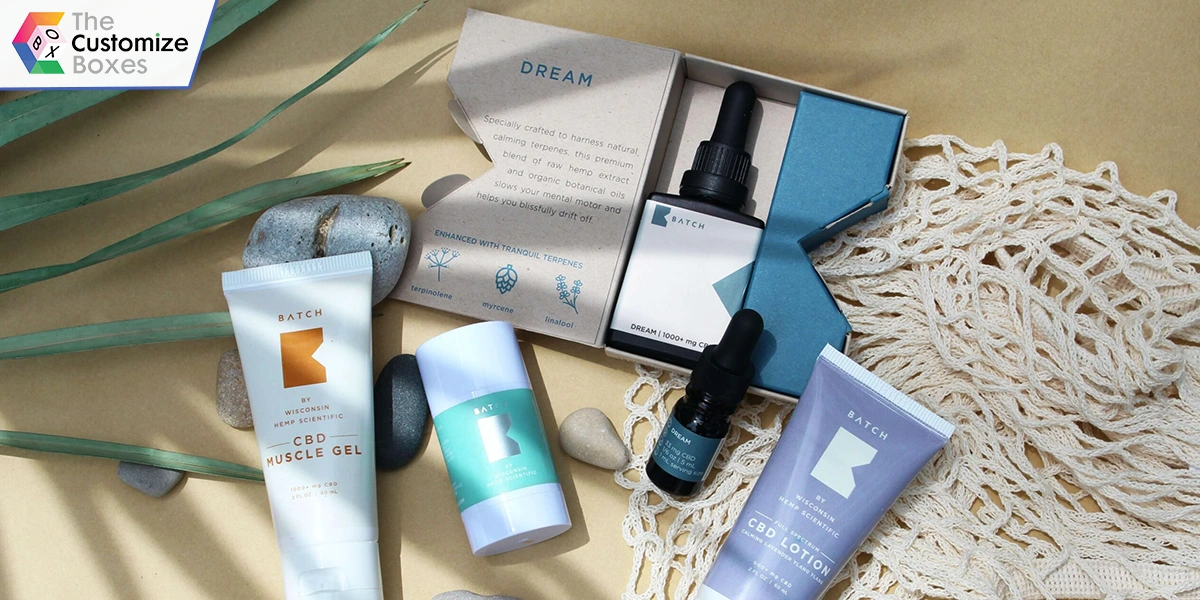
Packaging materials are of many kinds depending on their useability. Some are used for primary packaging, some for secondary, and the other packaging materials are considered fit for the tertiary packaging options. Still, you have some other packaging materials that help your business fulfill your product packaging requirements for any type of packaging of your products.
Read this blog to learn about the most common packaging materials, their types, and the use of these packaging materials.
Why You Should Learn Types of Packaging Materials
Packaging is an important requirement to package your products for different purposes. You need to protect your products, present and showcase them at different marketplaces and retail shelves, and you might consider organizing and storing your products. The type you should choose highly depends on the requirement of your product packaging.
In the following lines, you will learn about the different types of packaging materials and their role in protection, presentation, storage, and transportation. First, you need to learn what the most popular functions that packaging performs for your business are. Let’s discuss the roles of packaging first to have a better understanding of the need, requirements, and demand for some specific packaging materials:
Roles and Functions of Packaging
The selection of packaging material might be the best selection when you have a proper understanding of your packaging requirements. The primary concern with packaging material selection is why you need packaging and what material perfectly suits your packaging requirements.
Here are the most popular functions that packaging performs for businesses:
Protection of Products
Protection is the first and most important function of packaging. Some packaging materials are best for lightweight products, while they are not suitable for heavier products. This is why the primary objective of your product packaging requirements is important to cope with.
Packaging and Branding
Packaging plays a vital role in creating brand awareness, promotion, and commemoration to loyal customers. This recall makes a strike to the customer's mind and influences them to purchase the experienced brand products and services.
Presentation at Shelves and Marketplaces
Presentation and showcasing your products at different marketplaces, online stores, and retail shelves might be your requirement. Choose the packaging materials that suit your product packaging objectives.
Organization and Storage of Your Products
Products are packaged not only to showcase at different stores and shelves, but you might need to organize your products' stocks. Here, you might consider primary packaging inappropriate for your brand's product packaging. Your requirement might be fulfilled by tertiary packaging, and you need to decide on the perfect packaging for your brand.
Convenience to Carry
Convenience is one of the most important and primary functions of product packaging. To create convenience, ease, and comfort for your customers, you will think of packaging material that can enhance user experience.
Types of Packaging and Materials

Among the different types of packaging, four are the basic types of packing, and packaging materials are chosen to perfectly fit the requirements of your business. These packaging types are categorized according to the function they perform in packaging, storing, and organizing the products. Consider the following packaging types and materials:
Primary Packaging Materials
Here are the primary packaging materials and their significant characteristics:
Paperboard
Paperboard is a paper-based packaging material. It is a highly recyclable, eco-friendly, and cost-effective packaging material.
Plastic
Plastic is produced with the by-products of coals, crude oil, and natural gas. This material is flexible, durable, versatile, and lightweight. Rigid and flexible might also be included under the types of plastic packaging.
Wood
Wood is a hygienic packaging material compared to plastic or steel. It provides less opportunity for bacteria to grow. This might produce crates, pallets, and many more packaging solutions for product packaging.
Metal
Metal is a strong packaging material with high durability, reusability, and a highly in-demand packaging material. Aluminum and steel are both metallic packaging materials. However, aluminum is flexible, whereas steel is a hard packaging material. Both are used according to the packaging requirements.
Glass
Glass, at the same time, might be highly delicate or strong enough to survive breakage or damage. This packaging material is desirable as a sustainable, luxury, and highly preservative packaging solution for food and many other fragile products.
Biodegradable Materials
Biodegradable packaging materials are popularly known as auto-composable packaging materials. This packaging material is used to create or increase the eco-friendliness of packaging materials, like plastic. One of the major objectives of this packaging material is to prevent or reduce the harmful effects of other packaging materials.
Foil
Aluminum foil is a great packaging material with high-barrier properties, is lightweight, and is of great flexibility. This packaging material is desirable due to its unique features, like moisture resistance, flexibility, convenience in customizing, and many more.
Ceramic
Ceramic is extracted from minerals available in soil, such as clay and quartz. This packaging material is highly suitable for food like desserts, dairy, and ready meals. Highly resistant to heat, ceramic packaging material is popular today. However, it is not a recyclable material and has less durability.
Secondary Packaging Materials

Secondary packaging is mostly used to increase presentation, protection, and convenience. The following are commonly used packaging materials for secondary packaging solutions of brands:
Corrugated Cardboard
Corrugated cardboard is used to enhance the presentation and protection of premium and luxury products. Usually, luxury brands use this packaging to enhance customer experience and the perceived value of their premium products.
Shrinkable Wrap
Shrinkable wraps are plastic packaging material that shrinks on the application of heat. This packaging material is used for vacuum packaging for different products.
Paperboard Sleeves
Paperboard sleeves are paper-based packaging material. This packaging solution is used to cover the products by placing the products inside it.
Stretched Film
Stretched film is a versatile packaging material. This packaging material offers greater stability to the products packaged in it.
Blister Packs
Blister packs are popular with clear plastic cavities and are structured and shaped around the products. It is mostly used for small consumer goods, food, and pharmaceuticals.
Molded Pulp
Molded pulp, sometimes termed as molded fiber, is used to enhance the protection of products. This packaging is created with recycled paper, paperboard, cardboard, or natural fiber.
Tertiary Packaging Materials
For organizing and storing products, tertiary packaging is used. The packaging materials popular in this type of packaging are listed here:
Foam Inserts
Foam inserts are used to increase the protection of products. These enhance presentation, boost the unboxing experience, and protect your products.
Slip Sheets
Slip sheets are an alternative to wooden pallets and are an excellent solution for the protection of products during transportation.
Strapping Bands
Strapping bands are used to organize products, transportation, and storage. These strapping are mostly used in different materials, colors, and sizes to use for the perfect solution for your products.
Ancillary Packaging Materials
These are the additional packaging materials to enhance the utility, convenience, and ease in packaging. The following are some examples of these materials:
Tape
Tape is one of the most commonly used packaging materials. It is used to package small and medium products to keep them protected during transit or storage.
Labels
Labels are wrapped or covered around the product packaging, showcasing your brand logo, product details, and some other useful information.
Void Fillers
A void filler is an additional material to cover the empty space in the package. This is used to protect products from moving in the package during transportation.
Edge Protector
Edge protectors can be made with different materials and of different shapes and sizes according to the specific packaging requirements of products. These protectors protect the products’ edges from damage.
Bubble Wraps
Bubble wraps enhance protection, the unboxing experience, and the convenience of storing and organizing products in the package.
Packaging Peanuts
Packaging peanuts are popular in enhancing protection, the unboxing experience, and convenience. They are perfect fillers for the product package.
Pallet Wraps
Pallet wraps are used to organize different products for storage and transportation.
Dunnage Bags
These bags are produced to prevent products from scratches and damages during storage and transportation.
Desiccants
These materials are used to protect products from moisture because this packaging material absorbs moisture and saves the products from damage.
Choose The Right Packaging Materials for Your Brand
Choose the right packaging materials for your brand. First, think of the primary objective of your packaging needs, then select the right packaging materials that perfectly fit your product packaging requirements. The following are some packaging materials, packaging types, and the primary objectives they excellently fulfill for your product packaging requirements:
- Boost Products’ Perceived Value
- Transportation and Shipment
- Cost-Effective Packaging Solution
- Presentation of Your Brand
- Enhance Persuasiveness and Influence Prospects
- Sustainability and Eco-Friendliness
Conclusion
After learning what and how packaging materials perform their role, you are now in a better position to decide for your product packaging. Whether you are dealing with luxury products, precious gifts, or high-ticket items, you need to focus on premium packaging. For cost-effective packaging, you might consider choosing cost-effective, lightweight, and sustainable packaging.
